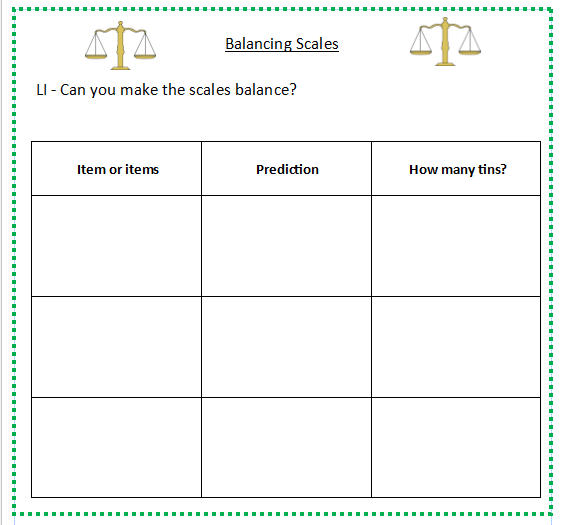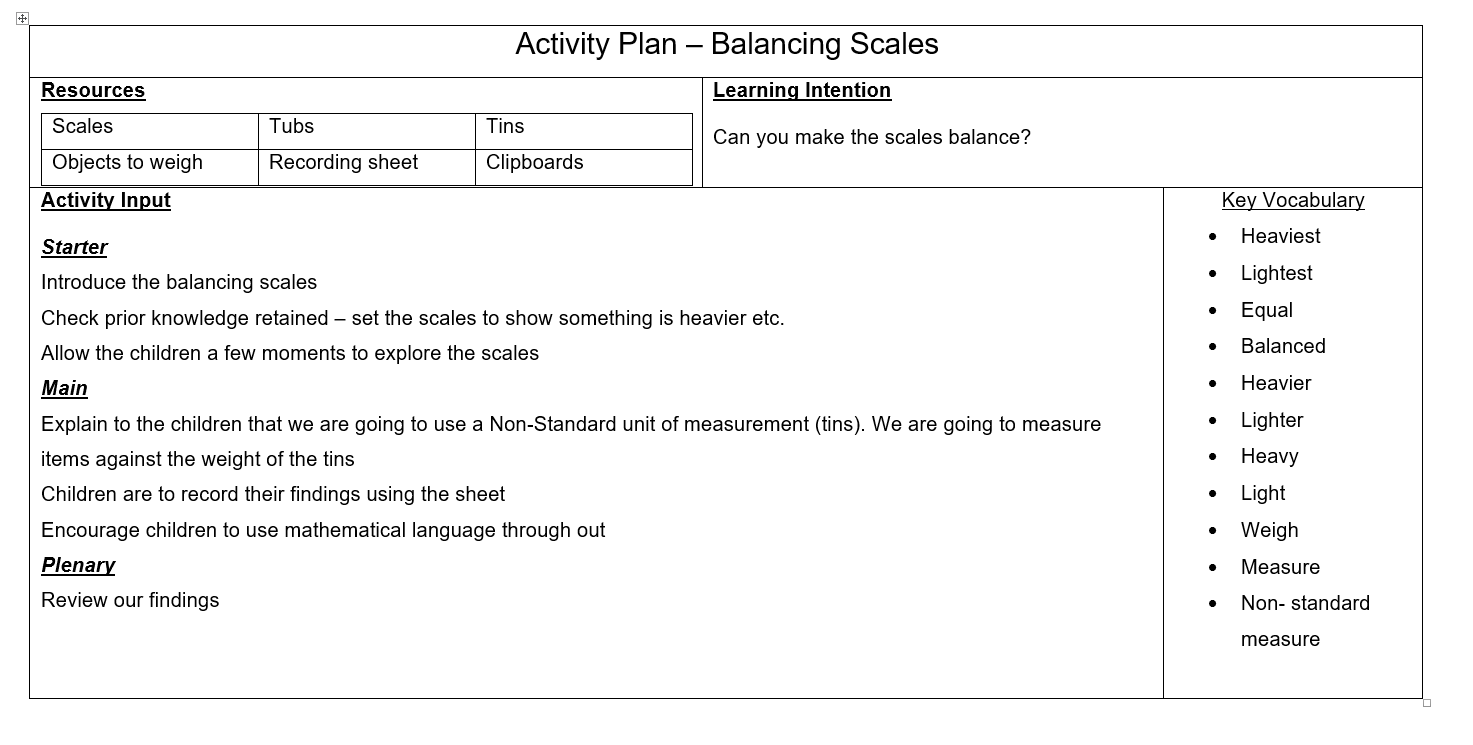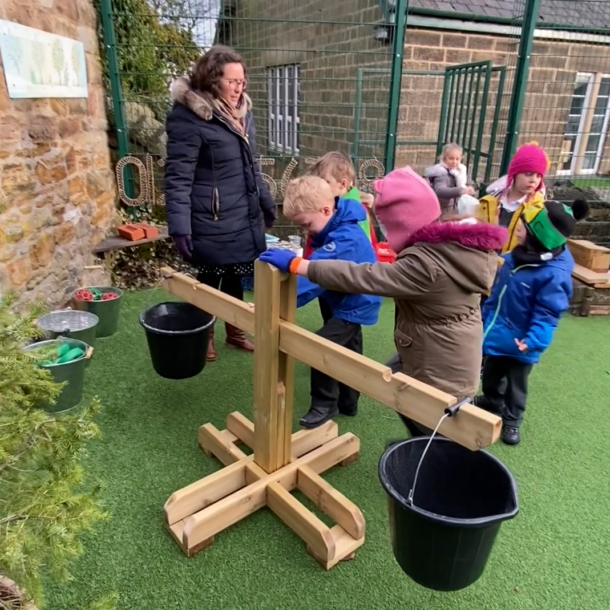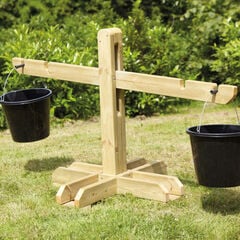We all know that making sure learning takes place during outdoor time means providing the right resources; Year 1 are weighing it all up! At Crich Infant School they have our Giant Outdoor Scales and Buckets so we went to see exactly how they are used both in directed learning and also child-led activity time.
Child-led activity
The scales are left in the playground at the school all year round. This way children have access to them whenever they go outside. Through experimenting with various objects and new things to weigh means children have a stronger foundation on which to build their understanding of weight. Not only this but they also get to work as a team and develop their prediction skills. These scales are perfect as they’re sturdy, weather proof and provide large scale, visual representations of weights.
Guided Learning
To begin with, prior learning and understanding is measured through a series of questions about the scales:
What are these?
What sort of weighing scales?
Why are they called balancing scales?
After this, a demonstration is given to reinforce the children’s understanding of how they can tell something is heavier or lighter. This was confirmed by Harry, who said:
You put loads of stuff in them and they go down and up.
Well done Harry!
Next comes new learning with the introduction of Non-Standard Units of Measure. In this case, the children get to use tins of spaghetti hoops! But anything can be used as long as you have a good quantity available.
To make sure this experiment is done correctly, the children are asked to complete this record sheet. This asks them to predict how many tins or ‘non-standard units of measure’, do they think a brick will weigh?

More New Learning
There’s more new learning next as the children are introduced to the word and concept of ‘prediction’. “A sensible guess” is what their teacher calls it. What I do notice is that all the children copy each other with their guesses the first time around. However, during their team work, they are more enthusiastic when it comes to guessing how many tins of spaghetti hoops it will take to make the scales balance.
The children are allowed to use anything they can get their hands on, in terms of what they can measure. This provides a sense of ownership over the experiment and also allows them to indulge their curiosity.
Problem Solving
On a couple of occasions, the items the children choose don’t equal full tins of spaghetti hoops, so they are required to work out what else they can do to make the scales balance. This usually means adding more to the items they have chosen. In the case of conkers, it takes a great deal more than they think to make the scales balance against just one tin of spaghetti. 77 in fact!

All in all, the children get a great deal out of the scales: an understanding of weight, mass and balance; enriched language with words like ‘heavier’ and ‘lighter’ and also non-maths skills such as team work, creativity with which items they choose to weigh and as we just mentioned, problem solving. In fact, you can see all of this and more in the accompanying video.
If you’d like to try this activity with your children, feel free to use and adapt this activity plan, written by Paige Farley, Year 1 teacher at Crich Infant School in Derbyshire.

This article was written by our Social Media and Content Manager, Katie Addison, (former Subject Leader of English), in collaboration with Paige Farley, Year 1 teacher at Crich Infant School in Derbyshire.






